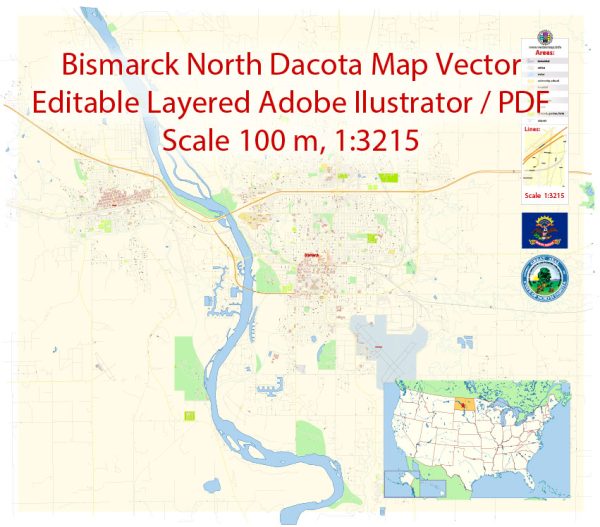Bismarck, the capital of North Dakota, has a rich history of urban development that reflects the growth and changes in the United States. Here’s an overview of the city’s historical urban development:
- Early Settlement and Founding: Bismarck’s history dates back to the mid-19th century when European settlers began to arrive in the area. It was originally inhabited by the Mandan and Hidatsa Native American tribes. In 1872, the city was founded and named after Otto von Bismarck, the Chancellor of the German Empire.
- Arrival of the Northern Pacific Railroad: The growth of Bismarck was significantly influenced by the arrival of the Northern Pacific Railroad in the early 1870s. This connection to the transcontinental rail network helped the city become a transportation and trade hub for the region.
- State Capital: Bismarck was chosen as the capital of the Dakota Territory in 1883, and it retained its status as the capital when North Dakota became a state in 1889. The presence of government institutions, including the State Capitol building, contributed to the city’s growth and development.
- Economic Expansion: The late 19th and early 20th centuries saw the development of Bismarck’s economy, driven by agriculture, government, and commerce. It became a center for trade and services in the region, with banks, businesses, and educational institutions.
- Growth of Infrastructure: The development of infrastructure, such as roads, bridges, and utilities, was crucial for the city’s expansion. The Missouri River, which flows through Bismarck, played a significant role in transportation and trade.
- Mid-20th Century: Bismarck continued to grow and modernize throughout the mid-20th century. The city saw the expansion of healthcare facilities, educational institutions, and cultural amenities.
- Oil Boom and Recent Development: In recent years, Bismarck experienced an economic boost due to the Bakken shale oil boom in western North Dakota. This brought an influx of population and increased demand for housing and services in the region. The city expanded its infrastructure to accommodate this growth, including new residential and commercial developments.
- Civic and Cultural Landmarks: Bismarck is home to several historic and cultural landmarks, including the North Dakota Heritage Center and State Museum, the Dakota Zoo, and the Fort Abraham Lincoln State Park, which preserves a historic military post and the On-A-Slant Indian Village.
- Modern Cityscape: Today, Bismarck is a thriving city with a diverse economy, a strong healthcare and education sector, and a well-developed transportation network. It continues to evolve and adapt to the changing needs of its residents.
Bismarck’s urban development has been shaped by its role as the state capital, its connection to the railroad, and the growth of various industries over the years. The city’s history is a testament to its resilience and adaptability as it has grown from a small settlement into a vibrant and dynamic urban center in North Dakota.


 Author: Kirill Shrayber, Ph.D.
Author: Kirill Shrayber, Ph.D.